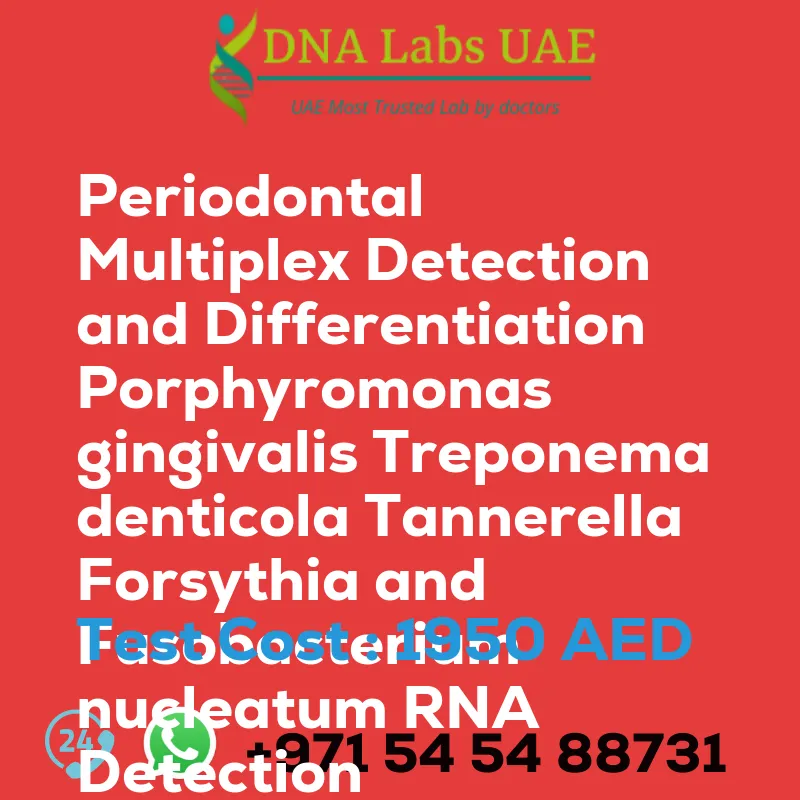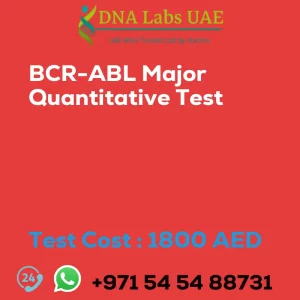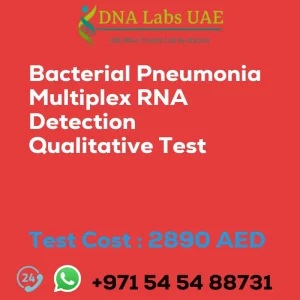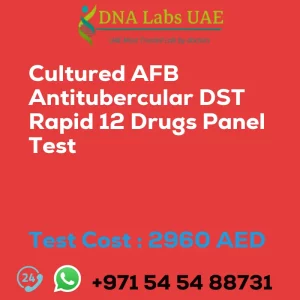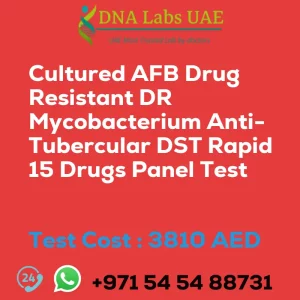Peridontal Multiplex Detection and Differentiation Porphyromonas gingivalis Treponema denticola tannerella forsythia and Fusobacterium nucleatum RNA Detection Qualitative Test
Test Details
The Periodontal Multiplex Detection & Differentiation (RNA Detection) Qualitative Test is a diagnostic tool used to detect and differentiate four specific bacteria associated with periodontal disease: Porphyromonas gingivalis, Treponema denticola, Tannerella forsythia, and Fusobacterium nucleatum. This test focuses on detecting the presence of RNA (ribonucleic acid) from these bacteria. RNA is a molecule that carries genetic information and is involved in the production of proteins in cells. By detecting RNA, the test can determine if these specific bacteria are present in a patient’s oral sample.
The test is qualitative, meaning it provides a yes or no answer regarding the presence of the targeted bacteria. It does not provide information about the quantity or severity of the infection. Periodontal disease is a chronic inflammatory condition that affects the gums and supporting structures of the teeth. These four bacteria are known to be major contributors to the development and progression of periodontal disease. Detecting and differentiating these bacteria can help in the diagnosis and management of the disease.
Test Components
- Price: 1950.0 AED
- Sample Condition: Saliva, scrap from deep of the tooth, inflamed gum, plaque, etc.
- Report Delivery: 4th Working Day Email: 48 hours, On phone: 36 hours
- Method: Real Time RT-PCR
- Test type: Viral
- Doctor: Physician
- Test Department: Genetics
Pre Test Information
Patients need to sign a Consent document and bring any clinical history for the Peridontal Multiplex Detection & Differentiation (Porphyromonas gingivalis, Treponema denticola, Tannerella forsythia & Fusobacterium nucleatum) (RNA Detection) Qualitative Test.
Test Process
The Periodontal Multiplex Detection & Differentiation (RNA Detection) Qualitative Test is typically performed in a laboratory setting using molecular biology techniques. It involves extracting RNA from an oral sample, followed by a series of reactions to amplify and detect the RNA of the target bacteria. The results are usually reported as positive or negative for each specific bacteria.
Benefits
This test can aid in early detection and accurate diagnosis of periodontal disease, allowing for timely intervention and appropriate treatment planning. It can also help monitor the effectiveness of treatment and guide personalized therapy for patients with periodontal disease.
| Test Name | Peridontal Multiplex Detection and Differentiation Porphyromonas gingivalis Treponema denticola tannerella forsythia and Fusobacterium nucleatum RNA Detection Qualitative Test |
|---|---|
| Components | |
| Price | 1950.0 AED |
| Sample Condition | Saliva, scrap from deep of the tooth, inflamed gum, plaque, etc. |
| Report Delivery | 4th Working Day Email : 48 hours.On phone : 36 hours |
| Method | Real Time RT- PCR |
| Test type | Viral |
| Doctor | Physician |
| Test Department: | Genetics |
| Pre Test Information | Need to sign Consent document and bring any clinical history of patient forPeridontal Multiplex Detection & Differentiation (Porphyromonas gingivalis, Treponema denticola, tannerella forsythia & Fusobacterium nucleatum) (RNA Detection) QualitativeTest |
| Test Details |
The Periodontal Multiplex Detection & Differentiation (RNA Detection) Qualitative Test is a diagnostic tool used to detect and differentiate four specific bacteria associated with periodontal disease: Porphyromonas gingivalis, Treponema denticola, Tannerella forsythia, and Fusobacterium nucleatum. This test focuses on detecting the presence of RNA (ribonucleic acid) from these bacteria. RNA is a molecule that carries genetic information and is involved in the production of proteins in cells. By detecting RNA, the test can determine if these specific bacteria are present in a patient’s oral sample. The test is qualitative, meaning it provides a yes or no answer regarding the presence of the targeted bacteria. It does not provide information about the quantity or severity of the infection. Periodontal disease is a chronic inflammatory condition that affects the gums and supporting structures of the teeth. These four bacteria are known to be major contributors to the development and progression of periodontal disease. Detecting and differentiating these bacteria can help in the diagnosis and management of the disease. The Periodontal Multiplex Detection & Differentiation (RNA Detection) Qualitative Test is typically performed in a laboratory setting using molecular biology techniques. It involves extracting RNA from an oral sample, followed by a series of reactions to amplify and detect the RNA of the target bacteria. The results are usually reported as positive or negative for each specific bacteria. This test can aid in early detection and accurate diagnosis of periodontal disease, allowing for timely intervention and appropriate treatment planning. It can also help monitor the effectiveness of treatment and guide personalized therapy for patients with periodontal disease. |

